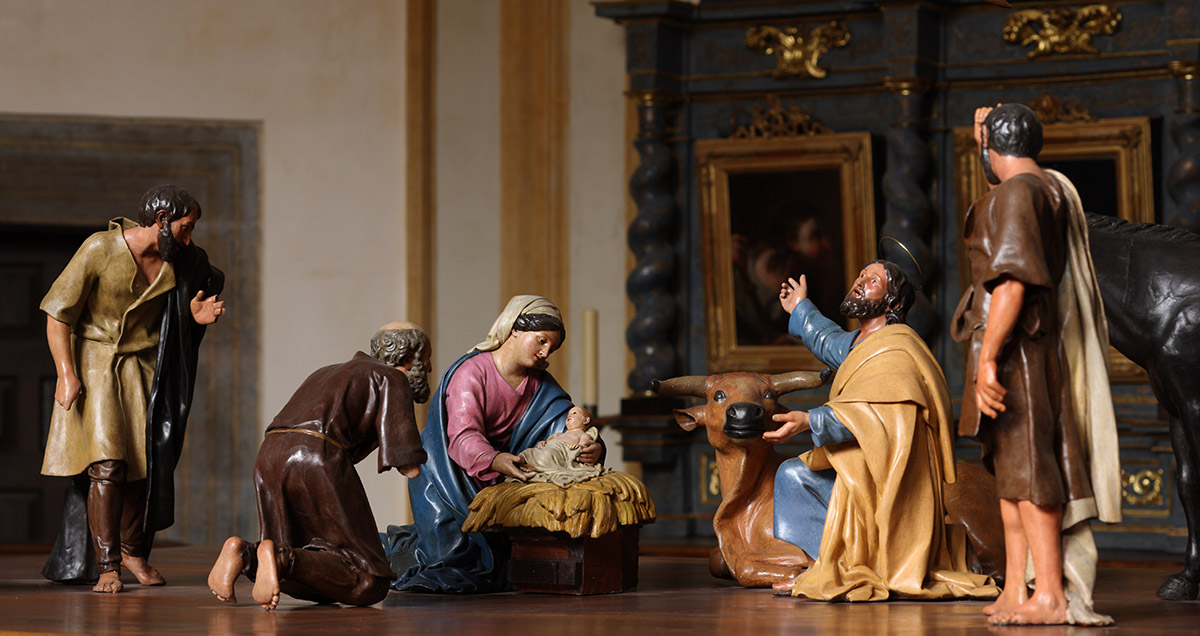Birth and Adoration of the Shepherds
Birth and Adoration of the Shepherds
This set of figures comprises nine freestanding sculptures: the Virgin and Child, Saint Joseph, three shepherds, a mule, an ox, a sheep and the star with its stele that crowned this Nativity Scene. It was commissioned to the sculptor Esteban de Ágreda by the Count of Villafuerte, who later gifted it to the Convent of Saint Francis in Vitoria. It must have remained there until it was confiscated and later moved to Saint Mary’s Cathedral .
The carvings indicate the hand of the academic sculptor Esteban de Ágreda. He used a traditional material like wood, which he usually employed for religious themes, setting aside stone, marble or porcelain for more profane subjects. The work combines the devotional gentleness that had pervaded Baroque sculpture with the refined, serene forms of academicism. Its execution was probably inspired by Francisco Salzillo’s Nativity Scene or compositions by other academic artists at the time. It is polychromed with flat tones, although subsequent interventions it has undergone have undermined its original colours.
Locution
Ficha técnica
BASIC BIBLIOGRAPHY
TABAR ANITUA, Fernando. Barroco importado en Álava y Diócesis de Vitoria-Gasteiz: Escultura y Pintura [cat.]. Vitoria-Gasteiz: Diputación Foral de Álava, 1995. p. 75.
TABAR ANITUA, Fernando. “Neoclásico”. En: GONZÁLEZ DE SAN ROMÁN, Miguel (Dir.). Vitoria-Gasteiz en el Arte, vol. II, Vitoria-Gasteiz: Gobierno Vasco, Diputación Foral de Álava, Ayuntamiento de Vitoria-Gasteiz, 1997, pp. 498-499.
TABAR ANITUA, Fernando, Escultura académica en Álava. La Escuela de Madrid del siglo XVIII. Vitoria-Gasteiz: Diputación Foral de Álava, 2008, pp. 182-183.
FERREIRA FERNÁNDEZ, Myriam. Los Ágreda. La evolución de la escultura del taller barroco a la academia neoclásica. Logroño: Instituto de Estudios Riojanos, 2014, pp. 325-329.



